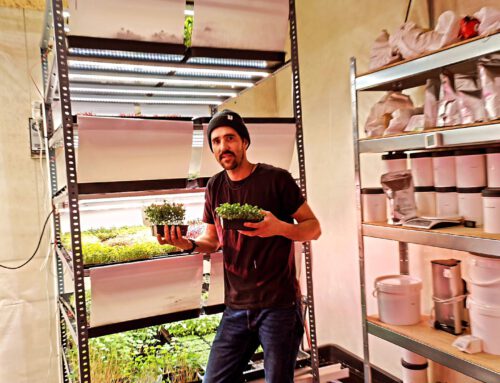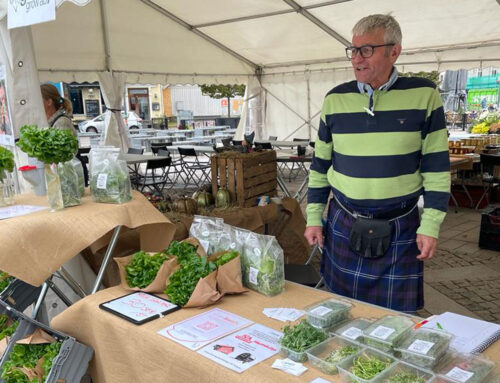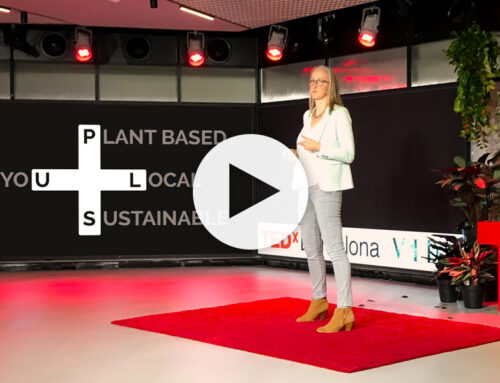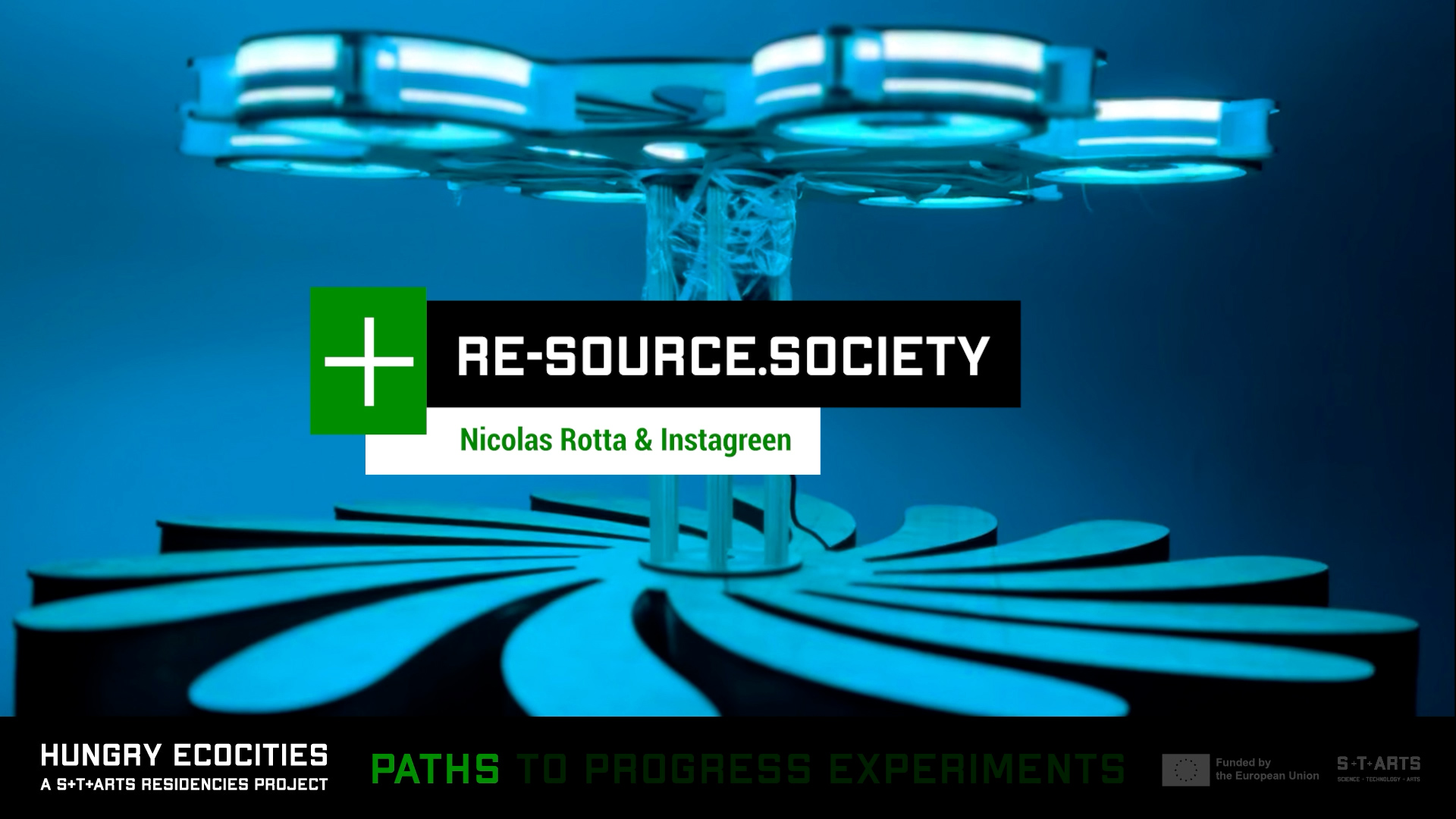
Feeding the hungry eco-cities of the future.
For centuries, humanity has drifted away from nature, trusting technology more than the ecosystems that sustained us. Agriculture and industrialization grew our cities, yet pushed our lands beyond what they can sustainably give.
Controlled environment agriculture (CEA) promises to ease that pressure. Using less water, less land and no chemicals. Allowing to grow food for the cities, in the cities. But, controlling environments comes at a cost: heating, cooling and dehumidifying demand for large amounts of energy, leaving heavy environmental footprints and expenses.
This raises the question: Is there a more resource efficient way of controlling indoor agricultural environments? Could we reconnect technology with nature’s own strategies and create resource-efficient systems that sustainably feed the hungry eco-cities of the future?
Nature, Technology & Art working together.
Through the European S+T+ARTS project, Hungry EcoCities, InstaGreen and Nicolas Rotta – an artist devoted to sustainability, regeneration, and social design – set out to explore new ways of indoor climatisation. Affordable, resource-efficient, and inspired by nature.
We want to work with the environment, not against it. So to better understand it, we studied the physical principles that shape climates, heat, humidity, airflow, phase change, and gathered data in the InstaGreen farm.
We also researched opportunities to develop passive systems through biomimicry. We looked at living systems and created a group of solutions: sweating skin for cooling, lungs for expelling moisture particles, fingers for controlling, nervous systems for sensing, brains for knowing when to activate.
These principles became prototypes, which we tested in the InstaGreen farm, refined and tested again. Until we felt that nature, technology and art started working together.
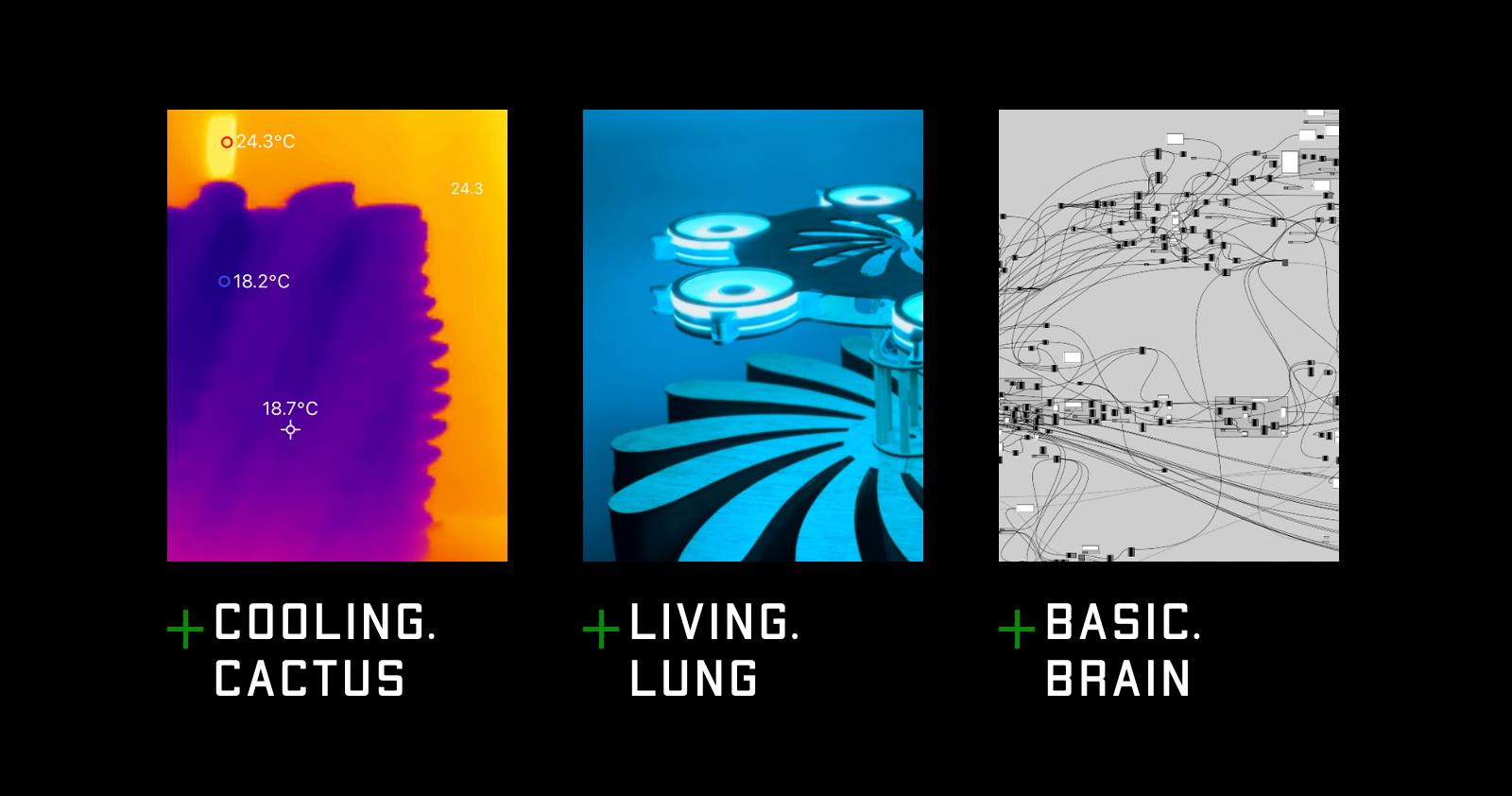
The Cooling Cactus.
Evaporative cooling is nature’s oldest air conditioner, from our skin releasing sweat to cool down, to leaves breathing out moisture.
The Cooling Cactus creates a healthy temperature balance. Inside its terracotta body, air and water flow through an internal tube system. Cooling happens within, while the glazed skin seals humidity inside.
The moist exhaust air is expelled outdoors, cooling the space without raising indoor humidity.
In tests, thermal imaging of the cactus showed a cooling capacity of 0.6 kWh/m2, an efficient and low tech way to lower the temperature.
The Living Lung.
Humidity moves from air with more vapor to air with less, driven by vapor pressure. Think of your skin in winter: even in damp, cold air, it still dries out, because the cold air around you carries very little water.
The Living Lung works the same way. Dry or cool outdoor air flows through a textile membrane – skin.
Water vapor diffuses from the room into the inner airflow of the lung and leaves the space. Expelling the humidity, without changing the room temperature.
This lets indoor humidity drop, even when it’s too cold or damp to ventilate. Without any heat loss, just passive humidity transport. At InstaGreen, the Living Lung lowered indoor humidity and cut dehumidifier energy usage by about 20%.
The Basic Brain.
Every-body needs awareness. Our climatic artefacts are connected through a digital brain, a system of sensors and logic that reads the air, understands its rhythms, and activates each device when the time is right. Like a nervous system and brain, for a living architecture.
Digital twins to work with nature.
To imagine how this system can live elsewhere, we created digital twins. Grasshopper and HTML simulations analyze local weather and microclimates, mapping how each device should adapt to different seasons, farms and locations. Fed by real-world measurements, these models generate new shapes letting our prototypes grow into visions for buildings, districts, and even cities.
These shapes help us with new ways of thinking: how we can dance with nature’s changes and harness what the environment offers, while keeping controlled environment agriculture truly controlled.
For small local farms, they reduce the use of natural resources, cut costs, and build resilience.
For the food system, they chart a path where farming breathes with its environment, not against it.
They remind us: innovation isn’t only about efficiency, it’s about reimagining our relationship with natural resources.
Planting seeds of lasting change.
Re-Source.Society is a beginning, a foundation, a reminder that sustainable food systems can emerge when technology learns from nature, and when art helps us see differently. In the future, these ideas can evolve, scale, and inspire others. For us, the Hungry EcoCities residency has shown the value of bringing together nature, technology, and art, to plant seeds of lasting change.
This Hungry EcoCities project has received funding from the European Union’s Horizon Europe research and innovation programme under grant agreement 101069990. It is part of the S+T+ARTS programme. S+T+ARTS is an initiative of the European Commission to bring out new forms of innovation at the nexus of arts, science and technology.
Download: One-pager pdf








